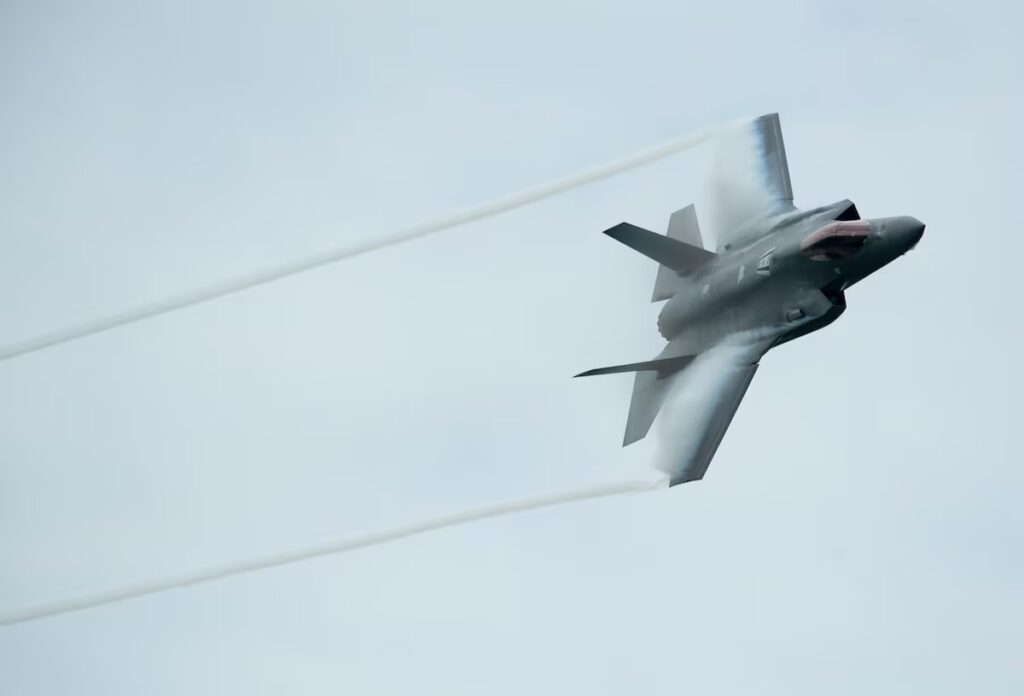
Stephen Fuhr, Secretary of State for Defence Procurement, met with Lockheed Martin LMT-N -0.72%decrease in Texas on Wednesday for a wide-ranging discussion that included Canada’s purchase of fighter jets from the U.S. defence contractor.
Canada’s plans for the jets were one of several items talked about in an all-day meeting, a government source said. The Globe and Mail is not naming the source, who is not authorized to publicly discuss details of the meeting.
In a statement to The Globe about his visit, Mr. Fuhr said, “Canada is committed to engaging with global partners to secure the capabilities our military needs, while creating lasting opportunities for Canadian industry and workers.”
Other topics included how Lockheed’s contracts with Canada could provide industrial benefits to the country, according to the statement.
Ottawa is contractually obligated to buy 16 F-35 Lightning fighter jets, but an agreement to purchase a total of 88 jets was put under review in March by Prime Minister Mark Carney, who said at the time that he wanted to take a closer look at how Canada’s defencebudget was being spent.
Opinion: How to fund increased defence spending? There’s nothing wrong with borrowing
When it was announced in early 2023, the order of Lockheed fighter jets was estimated to cost $19-billion. In June, a report by the federal Auditor-General found that the actual cost of the procurement is likely to be 50 per cent more than the original figure, which was based on outdated information.
A report by Reuters on Aug. 7 said officials in charge of the review ordered by Mr. Carney were making a strong case to stick with the original plan and purchase all 88 F-35s. However, a formal recommendation has not yet been made.
On Aug. 15, the Department of Defence told The Globe that the review of the purchase, which is being carried out internally by deputy ministers, would be delivered by the end of summer. It did not say whether it would be made public.
Mr. Fuhr’s visit to Texas follows his trip to Sweden with federal Industry Minister Mélanie Joly where they met with Saab.
The Swedish defence company, which came second to Lockheed in the competition for Canada’s jet contract, has proposed assembling part of its Gripen E-series jets in Canada. These planes are seen as an alternative that could replace some of the F-35s in Canada’s original purchase if it decides to diversify from the U.S.
Opinion: The solution to Canada’s F-35 fighter jet dilemma? Buy both American and European aircraft
On Wednesday, Mr. Carney wrapped up a four-day European tour that included visits to Ukraine, Germany and Latvia. Defence featured heavily in his discussions with other world leaders, signifying his seriousness about deepening ties with Canada’s allies beyond the U.S., particularly in matters of security.
In June, Canada signed a Security and Defence Partnership with the European Union, of which Germany and Latvia are both members, to bring it closer to participating in ReArm Europe, an EU plan to boost its defence capabilities. By furthering Canada’s participation in the initiative, Mr. Carney said he hopes to bring more defence procurement and industrial opportunities to the country.
The Canadian and U.S. defence industries are heavily intertwined. Of the 600 companies that make up Canada’s defence industrial base, roughly 40 per cent are subsidiaries of U.S.-headquartered companies.
Mr. Fuhr’s focus Wednesday was on ensuring Canada benefits from dealings with Lockheed, through mechanisms such as Ottawa’s Industrial and Technological Benefits Policy that promotes investment in Canada, the government source said.
However, industry members have said that the Canadian policy is flawed and won’t be able to keep pace with the defence procurement targets Ottawa is striving for, owing to unnecessary rules and bureaucracy.
The coming months promise to be a busy period for the federal government, with several decisions and reports anticipated to provide further clarity on Ottawa’s defence spending plans.
Among them are the selection of a prime contractor for Canada’s submarine purchase, a decision on the F-35s purchase, a fall budget and a Defence Industrial Strategy, outlining how the country will balance building a domestic industry with strategic international procurement.